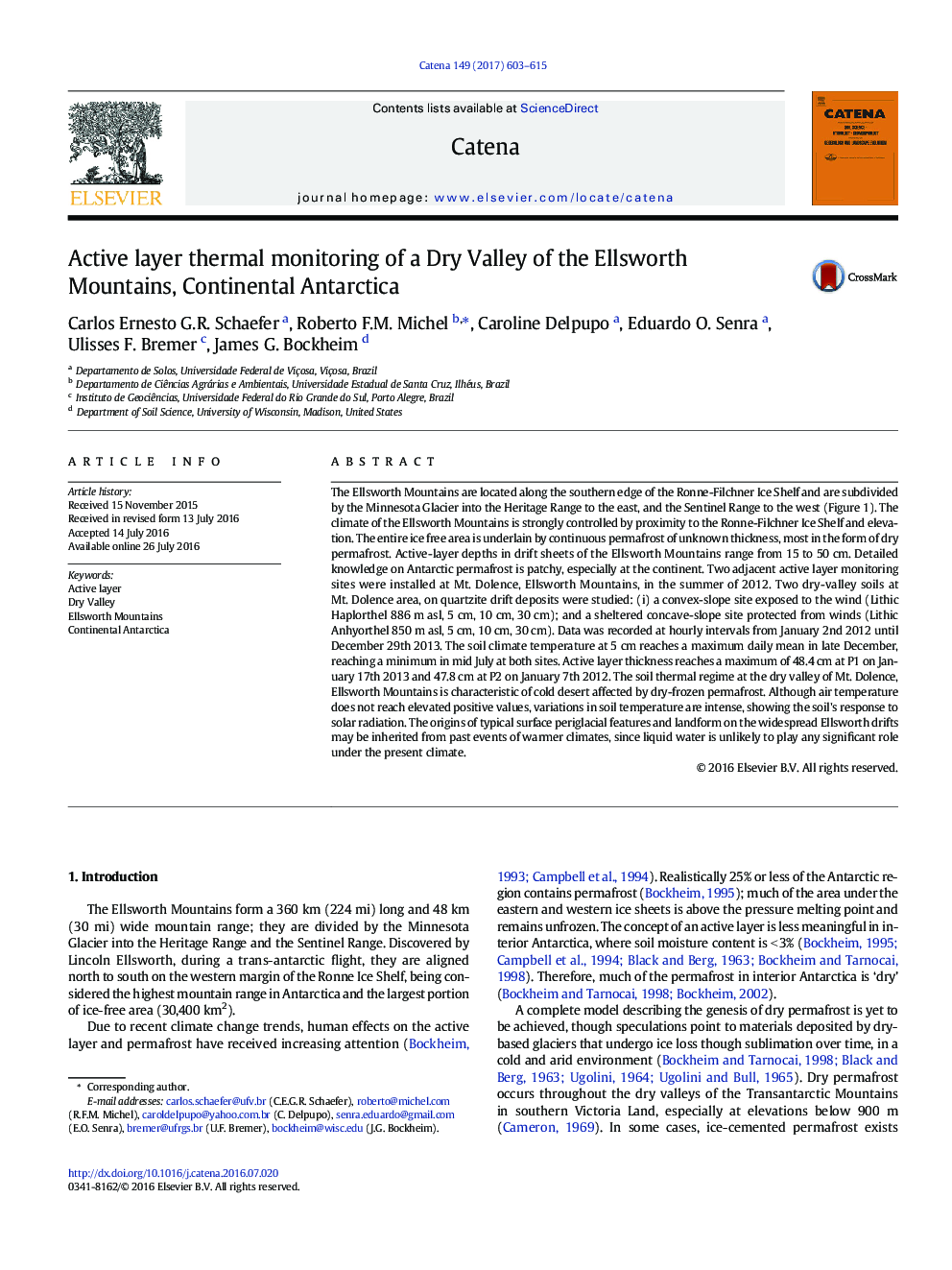| Article ID | Journal | Published Year | Pages | File Type |
|---|---|---|---|---|
| 5770092 | CATENA | 2017 | 13 Pages |
â¢The soil thermal regime is characteristic of polar desert affected by Dry-permafrost.â¢Variations in soil temperature are intense during the summer, showing the response to radiation.â¢The periglacial landforms, are not in phase with the present polar cold desert climate.â¢The landscape dynamics evolves under scarce conditions that last for very short times.â¢The thermal regime at Ellsworth is comparable to other continental areas such as the dry-valleys.
The Ellsworth Mountains are located along the southern edge of the Ronne-Filchner Ice Shelf and are subdivided by the Minnesota Glacier into the Heritage Range to the east, and the Sentinel Range to the west (Figure 1). The climate of the Ellsworth Mountains is strongly controlled by proximity to the Ronne-Filchner Ice Shelf and elevation. The entire ice free area is underlain by continuous permafrost of unknown thickness, most in the form of dry permafrost. Active-layer depths in drift sheets of the Ellsworth Mountains range from 15 to 50Â cm. Detailed knowledge on Antarctic permafrost is patchy, especially at the continent. Two adjacent active layer monitoring sites were installed at Mt. Dolence, Ellsworth Mountains, in the summer of 2012. Two dry-valley soils at Mt. Dolence area, on quartzite drift deposits were studied: (i) a convex-slope site exposed to the wind (Lithic Haplorthel 886Â m asl, 5Â cm, 10Â cm, 30Â cm); and a sheltered concave-slope site protected from winds (Lithic Anhyorthel 850Â m asl, 5Â cm, 10Â cm, 30Â cm). Data was recorded at hourly intervals from January 2nd 2012 until December 29th 2013. The soil climate temperature at 5Â cm reaches a maximum daily mean in late December, reaching a minimum in mid July at both sites. Active layer thickness reaches a maximum of 48.4Â cm at P1 on January 17th 2013 and 47.8Â cm at P2 on January 7th 2012. The soil thermal regime at the dry valley of Mt. Dolence, Ellsworth Mountains is characteristic of cold desert affected by dry-frozen permafrost. Although air temperature does not reach elevated positive values, variations in soil temperature are intense, showing the soil's response to solar radiation. The origins of typical surface periglacial features and landform on the widespread Ellsworth drifts may be inherited from past events of warmer climates, since liquid water is unlikely to play any significant role under the present climate.
